![]()
|
Cork
& Edge |
Location and period of operation:
|
Cork &
Edge |
Burslem |
1846 |
1860 |
|
Earthenware and ironstone manufacturers at the Queen Street Works and the New Wharf Pottery, Burslem, Stoke-on-Trent, England
|
Previously: Cork & Condliffe
Subsequently: Cork, Edge & Malkin
Other manufacturers and merchants supplied
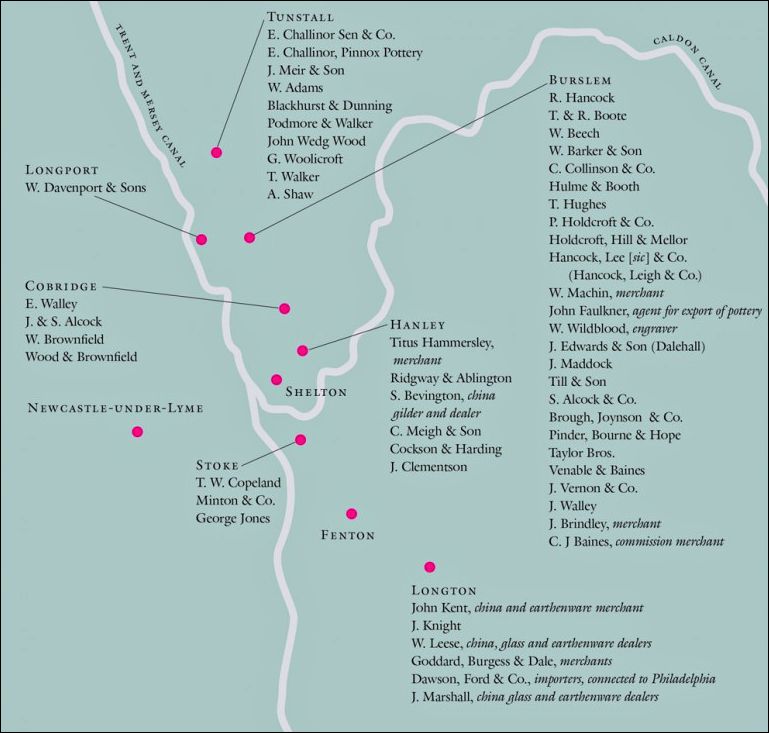
Staffordshire manufacturers and
merchants supplied by Cork and Edge with ceramics from 1848 to 1860.
The names provided are manufacturers, unless otherwise stated.
Fig 7 from: Comparative Studies in Anglo-American Ceramic Demand, Neil Edwins
| "Cork and Edge supplied a striking number of other manufacturers and merchants in the Staffordshire region (fig. 7) — prestigious manufacturers such as Copeland and Minton and Company of Stoke, and even the Seacombe Pottery, Liverpool, the Wear Pottery, Southwick, Sunderland, and the St. Peter’s Pottery, Newcastle-upon-Tyne." |
Selected
by the Committee for the Staffordshire Potteries
to exhibit at the Paris Universal Exhibition of 1855

The London Gazette, 9th January 1855
|
"Newport Pottery. — These works were established at the close of last century by Mr. Walter Daniel, and about 1810 passed into the hands of Mr. John Davenport. The manufacture was afterwards carried on by Messrs. Cork and Edge, and is now continued by Messrs. Edge, Malkin, & Co., a firm which, with various alterations in partnership, dates back to the beginning of the present century. Messrs Cork and Edge, in their ordinary earthenware, introduced many years ago a process of inlaying the patterns in the ground body, but of different colours. These were intended for the cheapest markets, but were produced in good taste. Three of these designs, two teapots and a ewer, shown at the Great Exhibition of 1851, are engraved on Figs. 381 to 383. The productions of the firm at the present time are dinner ware ; jet, enamelled, lustre, and other fancy goods ; and all the ordinary wares for the home and foreign markets."
Figs. 381 to 383
Jewitt, The Ceramic Art of Great Britain, 1878
|
moulded ware
 relief moulded jug in the botanic pattern with a pale blue glaze |
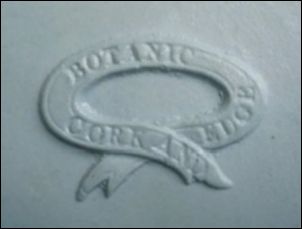 Botanic Cork and Edge
|
Chang
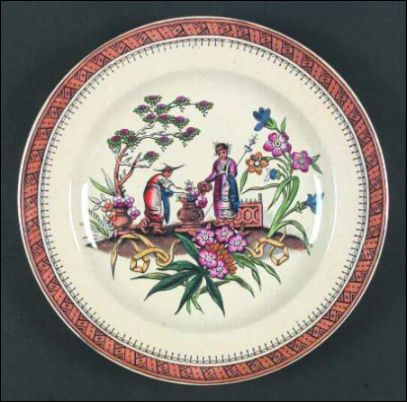
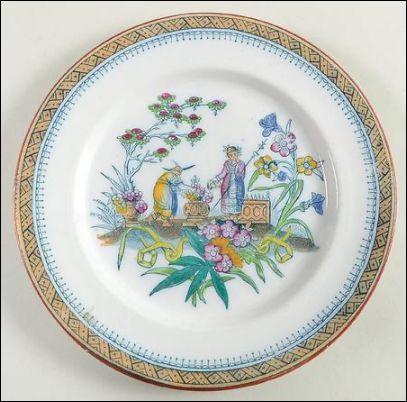
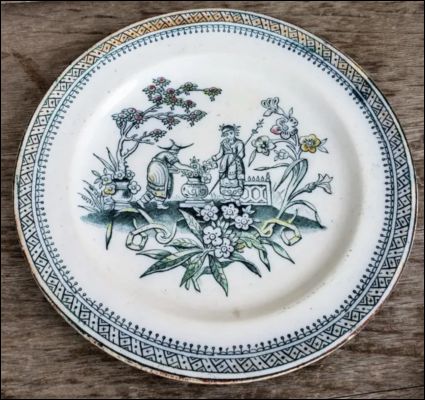
'Chang' was a popular pattern
produced in a range of styles
In Chinese 'Chang' can be a surname meaning "lasting forever" or "constant" - it can also be a given name with meanings like "flourish," "prosper"
this pattern was continued by successor companies
Verona
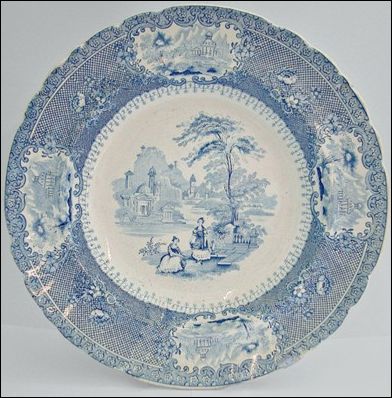
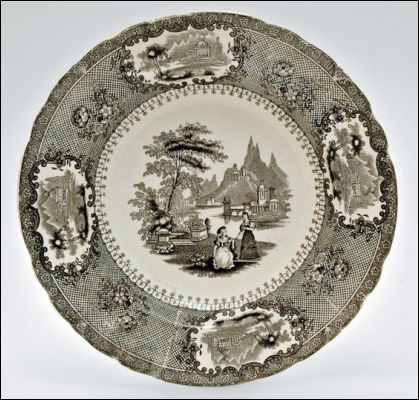
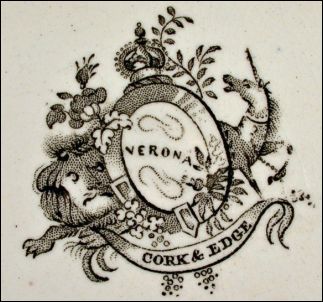
transfer ware soup dishes in
the Verona pattern - Cork & Edge
Willow Pattern
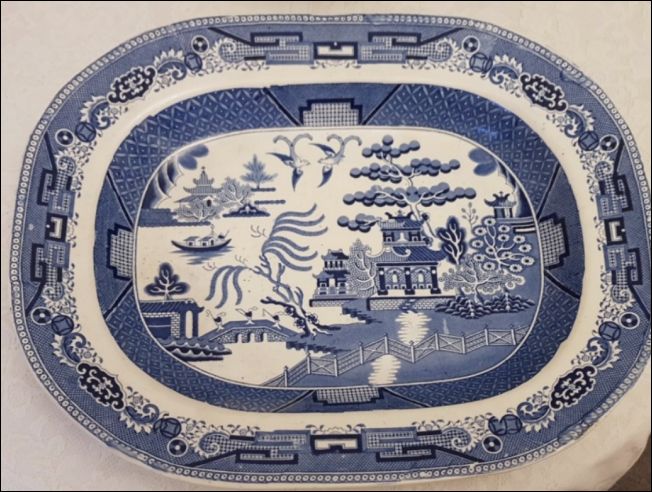 platter in the popular Willow Pattern |
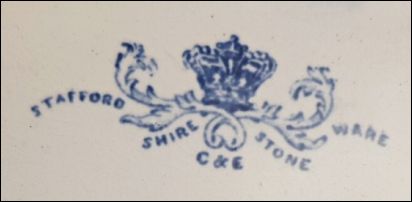 Staffordshire Stone Ware C & E |
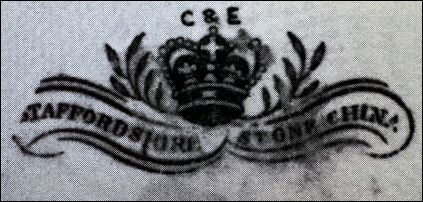
C & E
Staffordshire Stone China
Cork & Edge, printed mark
from a blue-printed
earthenware Willow pattern deset plate
courtesy: Staffordshire potters, R. K. Henrywood
Marks &
initials used on
ware for identification:
C & E
CORK & EDGE
Pearl Ware Ironstone

Botanic
Cork and Edge
moulded mark often used on
relief moulded jugs

Cork and Edge
belt style mark incorporating the lion and unicorn from the Royal Arms
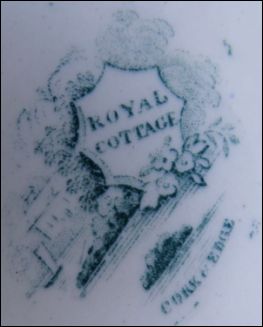
Royal Cottage
Cork & Edge
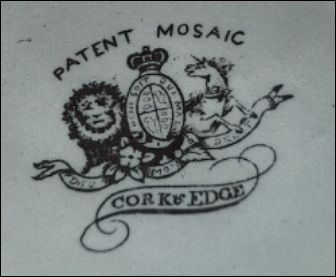 Patent Mosaic Cork & Edge
|
Vermicelli is the pattern name |
marks incorporating the British Royal Arms
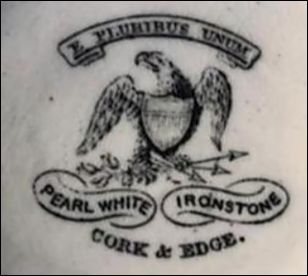
E Pluribus Unum
Pearl White Ironstone
Cork & Edge
mark used ware for the American market
- it incorporates the motto of the United States:
E
Pluribus Unum and the eagle, olive branch and arrows of the Great
Seal
Newport Pottery (New Wharf Potteries)
|
Jewitt (1878) records Cork & Edge (& subsequently Edge, Malkin & Co) as operating the Newport Pottery. He differentiates this manufactory from the Newport Works 'established in 1866 by Malkin, Edge & Co.' pp 259, 260 - NOTE: this works is probably the New Wharf Pottery. Various directories list Cork, Edge & Malkin as operating from the New Wharf Potteries. |
Queen Street Works
|
The London Gazette (Jan 1855) lists Cork & Edge, Queen Street, Burslem as selected for exhibition at the Paris Exhibition of 1855. In the Staffordshire Advertiser (21 April 1860) it is recorded that a site in Queen Street, opposite Cork & Edge's manufactory has been bought for the Wedgwood Institute. (Rodney Hampton - Pottery References..) Queen Street was named after the ware Josiah Wedgwood made for Queen Charlotte in 1765. Opposite the Cork & Edge Queen Street Works is the Wedgwood Institute which was built on the site of Wedgwood's Brick House Works |
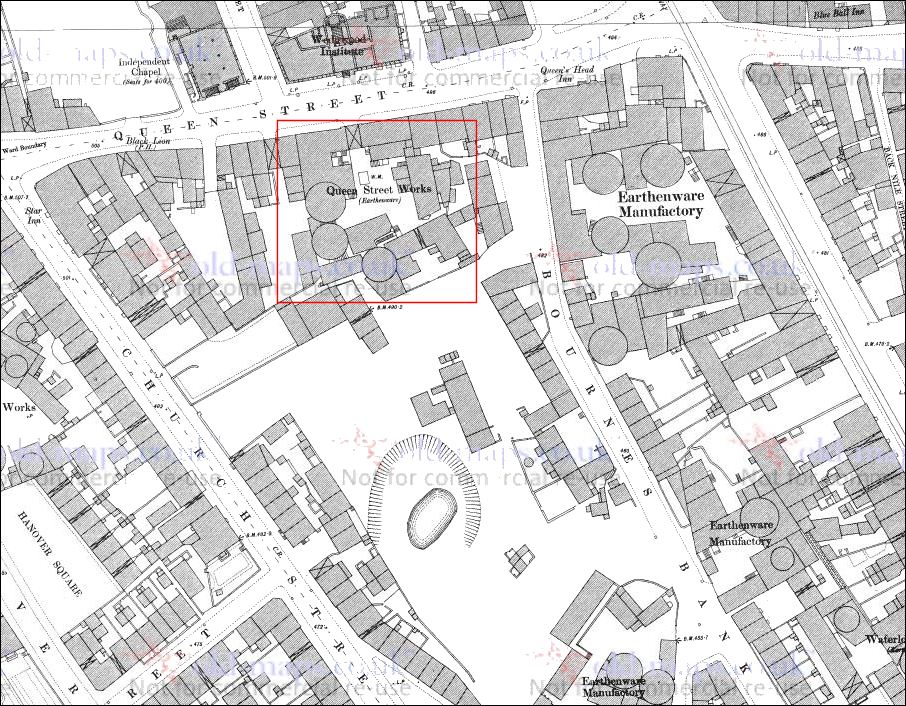
1879
map showing the Queen Street Works, Burslem
Questions, comments, contributions? email: Steve Birks